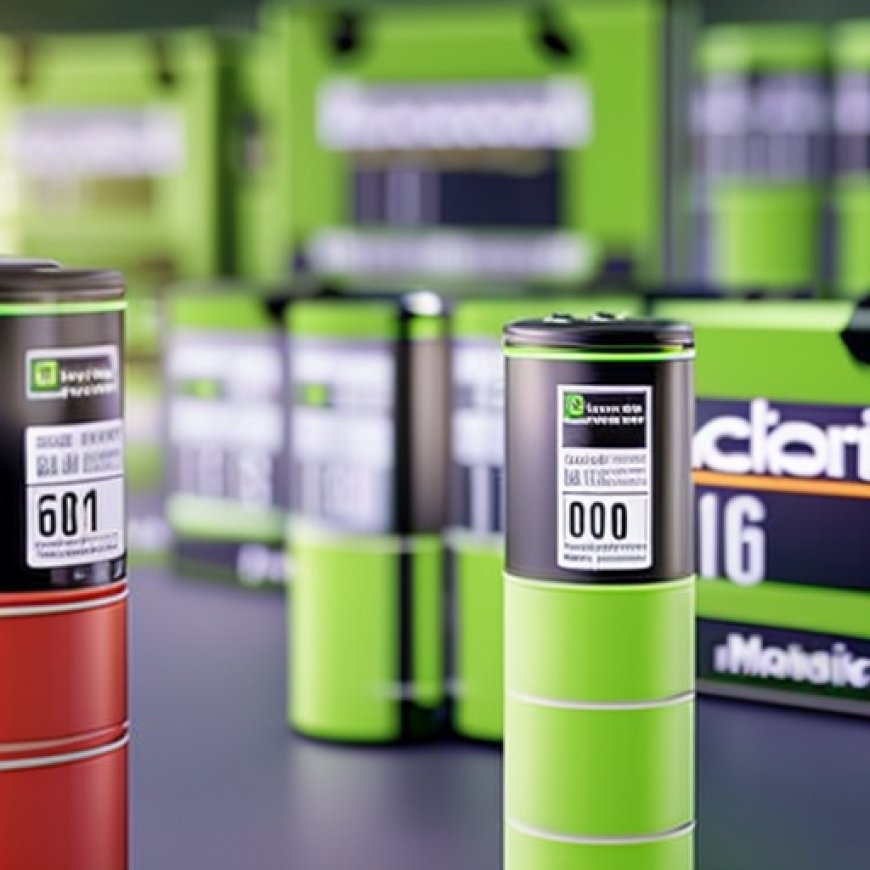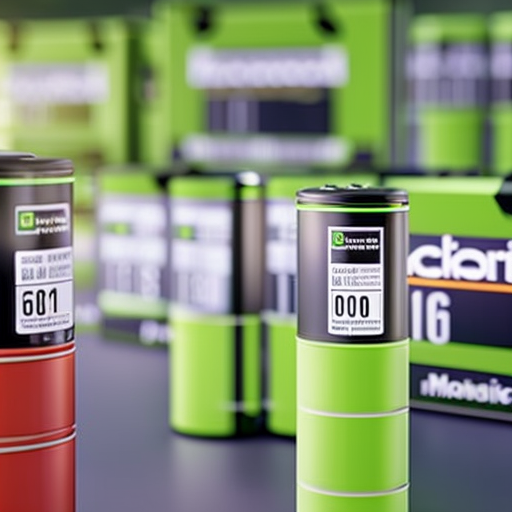Schneider Electric Releases All-In-One Battery Energy Storage System for Microgrids – Batteries News
Schneider Electric Releases All-In-One Battery Energy Storage System for Microgrids Batteries News


Schneider Electric Releases All-In-One Battery Energy Storage System for Microgrids
Schneider Electric, the global leader in digital transformation of energy management and automation, today announced a Battery Energy Storage System (BESS) designed and engineered to be a part of a flexible, scalable, and highly efficient architecture. BESS is the cornerstone for a fully integrated microgrid solution that is driven by Schneider Electric’s controls, optimization, and world-renowned digital and field services.
Partnership with Graybar
Graybar, a leading distributor of electrical, communications, data networking products, and provider of supply chain management and logistics services, is the inaugural channel partner for Schneider Electric’s new BESS, offered as part of the EcoStruxure Microgrid Flex system. Renewable energy is a growing part of Graybar’s comprehensive portfolio of solutions.
Microgrid Flex system. Renewable energy is a growing part of Graybar’s comprehensive portfolio of solutions.
Key Features of BESS
As part of a microgrid system, BESS captures energy from different sources, accumulates this energy, and stores it in rechargeable batteries for later use. Battery Energy Storage is the Distributed Energy Resource that enables most customer energy-use cases, including resiliency, demand-charge reduction, grid services, renewable self-consumption, decarbonization of electrical energy, and variable generation smoothing.
- Full Integration: The all-in-one enclosure seamlessly incorporates pre-integrated components, streamlining site engineering, construction, and installation processes while minimizing labor and material expenses. The paralleling capability enables multiple BESS units to function as a unified entity. This comprehensive integration encompasses inverters, batteries, cooling systems, transformers, safety features, and controls, ensuring optimal performance and efficiency.
- UL Certified and Compliant: The solution is fully certified and compliant with UL9540 certification and has a cutting-edge fire safety system design aligned with the latest standards outlined in NFPA 855.
- Easy Installation & Maintenance: The ready-to-deploy system, featuring a meticulously tested, validated, and documented architecture (TVDA), facilitates installation processes, surpassing the efficiency of traditional custom-engineered designs. The solution also seamlessly integrates with Schneider Electric’s Energy Management Systems (EMS), significantly reducing integration time and minimizing field errors.
- Resilience: The system offers bidirectional connectivity to the grid, providing the flexibility to operate as either grid-connected or off-grid. With the capacity to store energy for immediate access during outages, BESS can deliver up to 2 MW of power when needed.
- Peace of Mind: Comprehensive services and support available throughout the lifecycle of the project and warranty execution for optimal maintenance and care.
Connection-Ready BESS Options
There are two connection-ready BESS options available: a small, hybrid 7-feet NEMA 3R Enclosure that is both AC and DC coupled and a medium 20-feet NEMA 3R Enclosure that is AC coupled. Sizes for the family range from 60kW to 2MW in 2h and 4h configurations.
Quotes from Schneider Electric and Graybar
Jana Gerber, Schneider Electric’s President of North America Microgrids, said:
“Our new Battery Energy Storage System marks a significant step forward in bringing resilient, sustainable, and economical energy solutions to the market. Amidst the global pursuit of net-zero objectives and the imperative for an enhanced grid, BESS strategically harnesses onsite generation capabilities to deliver substantial energy savings while maximizing renewable integration.”
Kathleen M. Mazzarella, Chairman, President, and Chief Executive Officer of Graybar, said:
“Graybar is proud to be at the forefront of innovation as the inaugural channel partner for Schneider Electric’s state-of-the-art Battery Energy Storage System. Together, Graybar and Schneider Electric remain dedicated to advancing sustainable technologies that deliver exceptional performance and value to our mutual customers.”
Source: Schneider Electric Releases All-In-One Battery Energy Storage System for Microgrids
SDGs, Targets, and Indicators
1. Which SDGs are addressed or connected to the issues highlighted in the article?
- SDG 7: Affordable and Clean Energy
- SDG 9: Industry, Innovation, and Infrastructure
- SDG 11: Sustainable Cities and Communities
- SDG 13: Climate Action
The article discusses Schneider Electric’s Battery Energy Storage System (BESS) for microgrids, which contributes to the goals of affordable and clean energy (SDG 7), industry, innovation, and infrastructure (SDG 9), sustainable cities and communities (SDG 11), and climate action (SDG 13).
2. What specific targets under those SDGs can be identified based on the article’s content?
- SDG 7.2: Increase the share of renewable energy in the global energy mix.
- SDG 9.4: Upgrade infrastructure and retrofit industries to make them sustainable.
- SDG 11.4: Strengthen efforts to protect and safeguard the world’s cultural and natural heritage.
- SDG 13.2: Integrate climate change measures into national policies, strategies, and planning.
The article highlights the use of renewable energy in microgrids through Schneider Electric’s BESS, contributing to SDG target 7.2. The BESS also supports sustainable infrastructure and industries, aligning with SDG target 9.4. Additionally, by enabling renewable self-consumption and reducing carbon emissions, it contributes to SDG target 11.4 and SDG target 13.2.
3. Are there any indicators mentioned or implied in the article that can be used to measure progress towards the identified targets?
- Percentage of renewable energy in the global energy mix
- Number of infrastructure upgrades and retrofits for sustainability
- Reduction in carbon emissions from energy consumption
- Integration of climate change measures into national policies and planning
While the article does not explicitly mention specific indicators, progress towards the identified targets can be measured using indicators such as the percentage of renewable energy in the global energy mix, the number of infrastructure upgrades and retrofits for sustainability, the reduction in carbon emissions from energy consumption, and the integration of climate change measures into national policies and planning.
Table: SDGs, Targets, and Indicators
| SDGs | Targets | Indicators |
|---|---|---|
| SDG 7: Affordable and Clean Energy | 7.2: Increase the share of renewable energy in the global energy mix. | Percentage of renewable energy in the global energy mix. |
| SDG 9: Industry, Innovation, and Infrastructure | 9.4: Upgrade infrastructure and retrofit industries to make them sustainable. | Number of infrastructure upgrades and retrofits for sustainability. |
| SDG 11: Sustainable Cities and Communities | 11.4: Strengthen efforts to protect and safeguard the world’s cultural and natural heritage. | Reduction in carbon emissions from energy consumption. |
| SDG 13: Climate Action | 13.2: Integrate climate change measures into national policies, strategies, and planning. | Integration of climate change measures into national policies and planning. |
Behold! This splendid article springs forth from the wellspring of knowledge, shaped by a wondrous proprietary AI technology that delved into a vast ocean of data, illuminating the path towards the Sustainable Development Goals. Remember that all rights are reserved by SDG Investors LLC, empowering us to champion progress together.
Source: batteriesnews.com

Join us, as fellow seekers of change, on a transformative journey at https://sdgtalks.ai/welcome, where you can become a member and actively contribute to shaping a brighter future.







